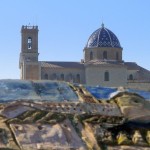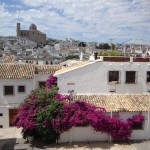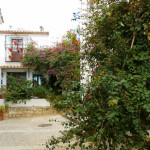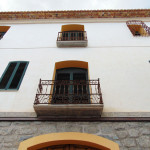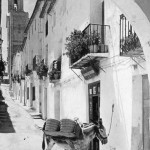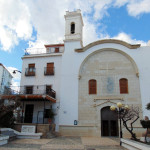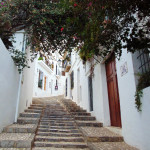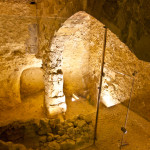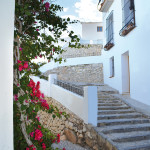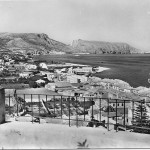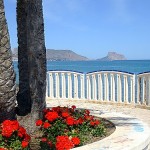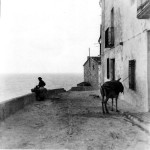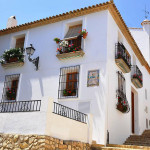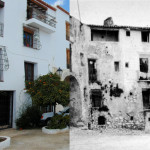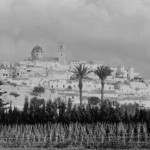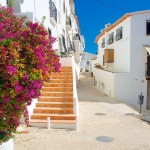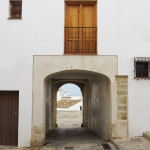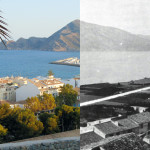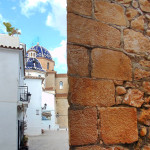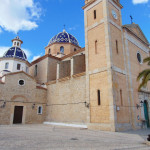The town of Altea is located in the natural outlet of Algar-Guadalest Valley, on the Mediterranean coast. The town center is developed from a mountain located in the center of a wide bay flanked at the ends, by the Morro Toix and the Sierra Helada. This central and strategic position makes it an icon scenic of the Costa Blanca.
On this dominant elevation we find the Bastion and Renaissance enclosure of the town of Altea, historic site declared of Cultural Interest. This Acropolis, possibly inhabited before, consolidated its habitat from the construction of a castle and a fortified settlement.
In the late sixteenth century the municipal area of Altea was almost completely uninhabited by insecurity generated by incursions of Berber pirates. On the right bank of the river Algar, the medieval settlement of Bellaguarda had been ruined in the early fifteenth century. Since the mid-sixteenth century it becomes necessary to improve the defense system against pirate attacks.
In the mid-sixteenth century it is built a defense tower. Under the protection of this tower the repopulation process of the new place of Altea starts. The Marquis of Ariza pays converting the tower in New Castle of Altea and the building of new houses. In 1617 the Lord of Altea gives settlement letter the inhabitants of the new Altea. So a new villa is consolidated to the right of the mouth of the Algar River.
The birth of modern Altea settlement follows a pattern of defensive character. The new town is built around its castle equipped with a new walled enclosure, place of defense and refuge for a population increase. Later the town grew outside the walls colonizing slopes -les costeres-, until you reach the bottom close to the gardens and the sea. A new door –Portal Nou- opens into the enclosure wall that connects the enclosure with the sailor suburb.
The Bastion and Renaissance Enclosure of Altea retains its foundational plan, the internal road structure – calle Mayor, Fondo, …-, access doors –Portal Vell and Portal Nou- and fragments of wall paintings from –guard way and Bastion-. It was declared possession of cultural interest by Decree 69/2013, of 7 June, by the Council of the Generalitat Valenciana because of its historical and architectural uniqueness.
Routes that we present allow a tour of the urban and historical evolution of Altea. The various proposed routes converge on the city walls where you can check its privileged location, observe the conserved elements and imagine the disappeared ones over time. You can walk around the city center from different starting points on a journey from the current Altea to the medieval and renaissance Altea.
ROUTE 1: BELLAGUARDA
Our itinerary begins in the commercial area and leads us to the ancient medieval Altea once settled on a low hill called Bellaguarda, where one of today’s most characteristic neighbourhoods of the old town is located today.
ROUTE 2: LA CASA DE LA SENYORIA BASTION
We are now at the Plaza del Convento square. We continue up this street to the ruins of the ancient Molí de Bellaguarda watermill. Continuing up the stairs, we arrive at the end of the route, the bastion of the Casa de la Señoría, a space currently occupied by the Glorieta del Maño square.
ROUTE 3: THE FISHERMEN’S QUARTER
We begin this route by the seaside, where the image of Sant Pere (Saint Peter) reminds us of Altea’s fishing origins. We are at one of the town’s most populated quarters, outside the walls, the Fishermen’s or San Pere’s Quarter, an area of great demographic and economical importance during the 18th century.
ROUTE 4: PORTAL NOU GATE
We start the route at the railway installations inaugurated in 1914. These installations helped to modernise the area a little, housing the town’s first hotels and hostals. This character was kept until well into the 20th century. Opposite is the L’Hort de la Campaneta, one of the few houses with walled orchards that have survived from the 19th century.
BIC
Altea’s Bastion and Renaissance Area was declared a Cultural Heritage Site (BIC) in 2013. It conserves its original 1617 structure, with gates giving access to the fortress. Magnificent buildings from the foundation period, built of the 18th and 19th centuries, have also been conserved.

